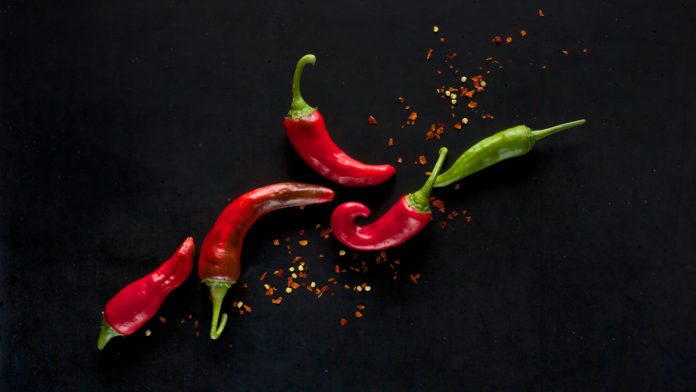Historically, chili peppers were only found in the American continent until the year 1492. They were found, according to the present geography, from the south of the USA to Argentina. However, smaller berry varieties of the capsicum species, which were mostly wild, were picked by the indigenous people living in the Tehuacán plain of Mexico even before 8000 BC. After the first settlement here, people officially started growing chilies. However, it was after about 2,000 years that the picking nomads became the first chili pepper farmers in the world.
The Beginning of Chili Cultivation
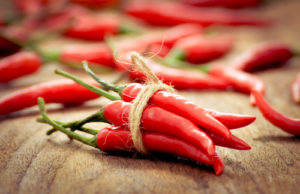 Interestingly, Chili cultivation had already started 8000 years from now and was considered an important spice. While there are about 28 forms of wild chilies that are known to man today, archaeological investigation has found the first main variety of chili that was harvested to place in Oaxaca. If you are wondering where do chilies come from? The first species to be cultivated was known as Capsicum annuum. In fact, it has also been known that chilies are one of the first crops to be domesticated in America. Along with this, the cultivation of other crops including millet, avocado, pumpkin, and more was also famous during the time. It was around 8,000 and 5,000 B.C when man started to develop a liking for chili and was considered an important crop of the time. Hence, the history of chili peppers dates back to as far as 8000 BC.
Interestingly, Chili cultivation had already started 8000 years from now and was considered an important spice. While there are about 28 forms of wild chilies that are known to man today, archaeological investigation has found the first main variety of chili that was harvested to place in Oaxaca. If you are wondering where do chilies come from? The first species to be cultivated was known as Capsicum annuum. In fact, it has also been known that chilies are one of the first crops to be domesticated in America. Along with this, the cultivation of other crops including millet, avocado, pumpkin, and more was also famous during the time. It was around 8,000 and 5,000 B.C when man started to develop a liking for chili and was considered an important crop of the time. Hence, the history of chili peppers dates back to as far as 8000 BC.
Wild Forms of Chilies in History
When trying to understand chili’s origin, mention must be made of chiltepin, which is postulated to be one of the most important chili pepper families from which Capsicum annuum has originated. Capsicum annuum is undoubtedly one of the most popular 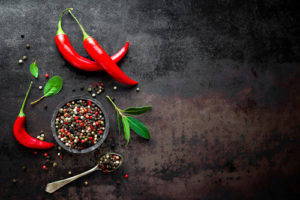 varieties of chili peppers in the world now. Besides, chiltepin is also linked to being the eponym of hot pepper, as the word Chili can be derived from Chiltepin or Chiltecpin based on the Aztec language.
varieties of chili peppers in the world now. Besides, chiltepin is also linked to being the eponym of hot pepper, as the word Chili can be derived from Chiltepin or Chiltecpin based on the Aztec language.
Capsicum pubescens was another wild variety of chili pepper that was already famous in today’s Bolivia. It used to grow in the Andes when the temperature was rather colder in the high altitudes. Another important variant to be mentioned is Capsicum eximium which grows a purple flower much like Capsicum pubescens. While it cannot be validated whether Capsicum eximium was the original pubescens, it has been found that because pollination occurs between the two variants. This leads to the creation of hybrids that cannot be tracked down efficiently. However, pubescens cannot cross-pollinate with some other capsicum species like Chinese, annuum, baccatum, and more.
Columbus and Chillies
With the discovery of the New World in 1492 by Christopher Columbus, a search for cinnamon and black pepper was initiated by him by November of that year. The two people sent on this adventure reported that they had come across large amounts of cinnamon reeds that were being transported by the Indians. However, they also reported having seen  nut-sized red berries with the Indians as well. The sailors were then set to find the locations where cinnamon reeds were being grown as cinnamon and pepper are extremely expensive spices of the time and even comparable to gold. However, the sailors were extremely disappointed when they could not find cinnamon.
nut-sized red berries with the Indians as well. The sailors were then set to find the locations where cinnamon reeds were being grown as cinnamon and pepper are extremely expensive spices of the time and even comparable to gold. However, the sailors were extremely disappointed when they could not find cinnamon.
Once he returned from Hispanola, an island in West India to Spain, Columbus found a native word “axi” for chilies. He found that axi or aji was not only tastier but also considered healthier in comparison to Black pepper. It was later confirmed that the indigenous Tribes of Aztec and Mayan would not eat anything without using chilies to Spice it. It has also been found in history that the Incas also knew about this spice and used it liberally along with tomatoes, Vanilla, and cocoa. Chilies with tomatoes were consumed as an aphrodisiac. Christopher Columbus then estimated that about 50 ships of chilies could easily be transported on an annual basis from the Spanish island of La Isla Española.
Chilli Distribution After 1493
The Treaty of Tordesillas was signed in the year 1493, and after 150 years of this treaty, Spaniards occupied Central America and some parts of South America while the Portuguese were spread across Rio de Janeiro and along the Amazon basin. It was in the Amazon basin that, Capsicum Chinese was originally found and was distributed around the globe by the 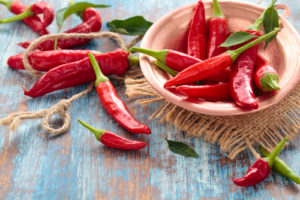 Portuguese.
Portuguese.
Portuguese had established several ports and garrisons around the coast of Africa where Chili cultivation had started after the first seeds were sent there. This way chili peppers Sun became a household staple in the black population.
By 1510, Africans had already been brought to South America as slaves. It was in the 16th century about a hundred years later that the African slaves brought Chilies to North America. These chilies were cultivated and grown around the slave huts wild the North American Indians were not particularly known for cultivating or growing Chilies, they used to collect wild Chilies from various areas of today’s Texas and Arizona.
More about its distribution
In1497, Vasco da Gama orbited and reached India in 1498. Then the monopoly that Indians and Arabian had over spices was broken. With this, the price for spices and other popular merchandise had reduced which increased the demand for these exquisite spices. They could now be consumed by even those belonging to the lower strata of the society.
In 1516, Portuguese sailors reached Pearl River in China, which started a trading post with Chinese approval. This started to become one of the most important port cities and their next 40 years. It is hence understood that this port city of Macao must have had a huge influence on the widespread use of chili in Asian culture. However, China banned it in the 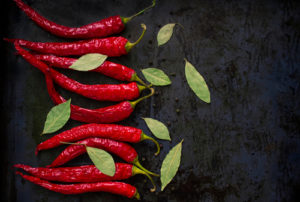 year 1547, when the trade started with Japan. However, chili had already become very popular in China. Moreover, it was the variety that was originally found in the Amazon basin that reached China. It was after many years that Capsicum Chinese was understood as a separate variety. Hence it was assumed that this variety had originated in China itself, leading to its name Capsicum Chinese.
year 1547, when the trade started with Japan. However, chili had already become very popular in China. Moreover, it was the variety that was originally found in the Amazon basin that reached China. It was after many years that Capsicum Chinese was understood as a separate variety. Hence it was assumed that this variety had originated in China itself, leading to its name Capsicum Chinese.
Chili had first entered via the Silk Road to Sichuan and Hunan which are very popular for their spicy cuisine. With the help of the trade routes, it entered the countries of North India, Thailand, Pakistan, Hungary, and Turkey. Chili peppers arrived in Germany and the eastern European countries from Hungary.
Conclusion
It has taken a long time for chili peppers to reach England. Chili pepper was brought to England by English soldiers who had served in India. They started to develop a taste for Indian cuisine. It was with this development that Chili was introduced to this Island.
It started its journey as a wild berry that remained undiscovered for a long time. Now, it is considered one of the most formidable spices all around the globe. After its travel far and wide, today, this chili pepper, including red chili pepper is found cultivated all around the tropical and temperate zones and is a part of the global culture.
